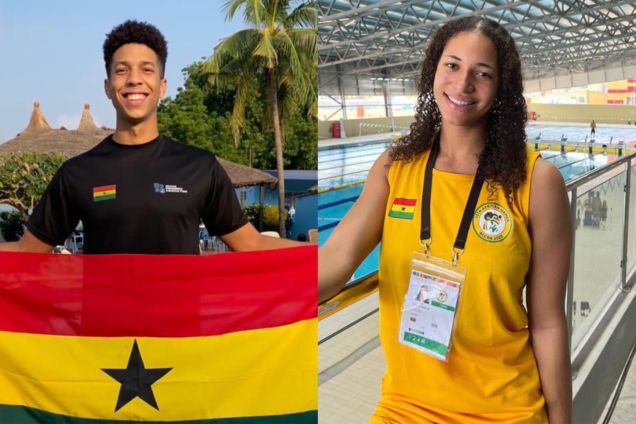The Tain Constituency in the Bono Region is endowed with several natural resources, including tourist sites and a fish farming business potential.
The constituency, named after River Tain, has become the key tourist destination in the region as the split of the former Brong Ahafo Region into three in 2019 left the majority of tourist attractions in the area in the Bono East Region.
The relatively deprived constituency became popular in the 2008 when it received the deciding right in the presidential election run-off, which brought Professor John Evans Atta Mills to power.
Profile
The Tain District, which is also the same as the Tain Constituency, was carved from Wenchi District in 2004, with its administrative capital as Nsawkaw.
It shares boundaries with Wenchi Municipality to the east, Jaman North District and Jaman South Municipal to the west, Sunyani West Municipality to the south, Berekum East Municipality to the south-west and bounded by the Banda District to the north and Cote d’Ivoire to the northwest.
The population of the area, per the 2021 Population and Housing Census, stands at 115,568, with 58,382 males and 57.186 females.

The Atomforsu CHPS Compound
The population is largely rural, with 69.9 per cent of the inhabitants living in rural communities, while 30.1 per cent live in urban settlements.
Five settlements, namely Badu, Seikwa, Nsawkaw, Brohani and Debibi, are the key urban areas in the constituency.
Political dynamics
Per the 2020 Presidential and Parliamentary elections, the constituency has 52,213 registered voters.
The opposition National Democratic Congress (NDC) has dominated the politics of the constituency since its creation in 2004, winning three elections out of five.
In the 2004 general election, the New Patriotic Party (NPP) candidate, Joe Danquah, won the seat, polling 16,328, representing 50.50 per cent of the total vote cast, while Ahmed Ibrahim of the NDC had 15,410 votes, representing 47.60 per cent.
In 2008, the outcome of the result changed, as Mr Ibrahim of the NDC polled 14,965 votes, representing 48.11 per cent, to win the seat, with the NPP’s Mr Danquah receiving 12,048 votes, representing 38.74 per cent.
In 2012, both parties changed their candidates, but the NDC’s Kwasi Agyemang Gyan-Tutu won the seat after polling 17,403, while NPP’s Joseph Ofori Amanfo, polled 13,035 votes.
In 2016, the NPP introduced a new candidate, Gabriel Osei, who won the seat by polling 14,569 votes, with Mr Gyan-Tutu of the NDC polling 14,528 votes.
In 2020, the NDC also brought a new candidate, Sulemana Adama, who also managed to win the seat by polling 20,374 votes, while Mr Osei of the NPP had 18,346 votes.
Demographics
Generally, the constituency has a mix of formal and informal workers such as teachers, health workers, civil and public servants, security personnel, traders and fisher folk, farmers, among others.
It’s main communities include Degedege, Atomfoso, Chechewere, Bonga, Brodi, Mamasa, Menji, Kwame Tenten, Yabraso, Tainso, Nasana, Hani and Nkona Kwagya.
The area is known for the cultivation of maize and tubers such as yam and cassava.
There are also clay deposits for bricks, and the soil supports the cultivation of transition and forest crops such as cashew, yam and food crops such as plantain, soya beans and cowpea.
The people also rear cattle, sheep, goats, pigs and poultry such as duck, guinea fowl, local and exotic fowls.
Development
The constituency has over the years endured socio-economic and infrastructure deficit in the areas of education, health, roads and sanitation — in toilet facilities and drainage systems.
There are several dilapidated school blocks with inadequate furniture, teachers and health services staff accommodation in the area.
With the area relatively deprived, the number of commercial business enterprises in the communities is limited, which has exacerbated the level of deprivation and living standards of the people.
The Nsawkaw and Seikwa markets, which are the oldest markets in the Bono Region, are also in a poor state.
Although there are some market sheds at the Seikwa Market, they are woefully inadequate to accommodate the increasing number of traders, while construction work on the Nsawkaw Market is ongoing.

Reshaping of Kwametenten-Jaro road
Currently, some traders at the markets are compelled to sell their wares, including foodstuffs, on the bare floor, while others manage affairs on wooden structures.
However, there are several local commercial businesses in some of the major towns that have become mainstays in the communities, providing an economic base for the communities to expand upon.
Self-help initiative
In a bid to improve the living conditions of the people, the assembly and the chiefs in the area have launched a self-help initiative and development committees in the major communities.
This strategic plan was structured to complement the development efforts of the central government by mobilising local financial and material resources to provide the immediate needs of communities through the self-help initiative.
Its current situation notwithstanding, the constituency has witnessed some development over the years as it hosts a 60-bed hospital, which is one of the biggest in the region.
Opinion leaders
The Chairman of the Degedege Youth Committee, Karim Moro, told the Daily Graphic that even though residents in the community were into fish production in commercial quantities, they had abandoned the venture and resorted to crop farming because the fish kept dying.
He said although the fishing industry was a very lucrative venture, the inexplicable situation with the fishes had killed the interest of the fish farmers as they always incurred losses.
He appealed to the government to rehabilitate the Seikwa-Degedege road and the Nsawkaw-Degedege road to facilitate movement, and to construct a health facility to serve the Degedege community.

The nature of the Seikwa-Degedege-Nsawkaw road
One of the leaders of the Nsawkaw Market, Amina Yakubu, appealed to the assembly to invest in the improvement of the markets in the area.
She also expressed concern about the poor roads in the area, explaining that the deplorable roads made their trading activities difficult, as they spent several hours to reach trading centres.
Tourism
The Begho Community Museum, which is located about five kilometres from Hani, a farming community, is one of the tourist attractions in the area.
History has it that the Begho people emerged from their settlement through a hole in the midst of the vast expanse of forest near the current location of the community after breaking the rocky surface with a special hammer.
Residents believe there was a tunnel under the land leading to where their ancestors had come from to settle, but Begho City collapsed as a result of civil war.
Untapped crocodile pond
Additionally, there is an unrefined tourism jewel, the Menji Crocodile Pond, located eight kilometres from Nsawkaw.
The pond is an alternative to the famous Paga Crocodile Pond, with the potential to change the fortunes of the area if developed.
Currently, no fee is charged to visit the pond. Visitors give whatever they are willing to offer at the site.

A crocodile crawling out of the Menji Crocodile Pond after it was called by some elders of the community
The Daily Graphic gathered from the Menji Traditional Council that about 200 crocodiles, called Bamba in the Banda language, live in the pond.
They come out to lie on the banks and wait until they are offered chicken before they go back into the pond to consume their “booty”.
History has it that the crocodiles emerged from nowhere to fill the pond, which was created for domestic and agricultural purposes.
The community has planted trees along the banks.
DCE response

Dr Lucy Acheampong, Tain District Chief Executive
The Chief Executive of the Tain District Assembly, Dr Lucy Acheampong, told the Daily Graphic the assembly had started negotiations with the Ghana Tourism Authority to develop the Menji Crocodile Pond.
She explained that there were other private organisations ready to partner the assembly to develop the pond, if the government was unable to do so.
Dr Acheampong said the government had given approval for the establishment of a Fishing Village to serve as a demonstration farm to train young people in fish production and vegetable farming in the area.
She said chiefs in the area had released about 200 acres of land for the project, explaining that drawings of the project had been completed.
Dr Acheampong said plans were also underway to establish a cashew village, where warehouses and markets would be constructed purposely for cashew business.
She said work on the Nsawkaw Market and rehabilitation of some roads, including 10 feeder roads, bridges and culverts, were underway to facilitate transportation of foodstuff.
Dr Acheampong said the assembly had so far constructed about 70 stores at the Nsawkaw Market to improve its poor state, and appealed to the government to help the assembly to construct a two-storey building around the market.
She mentioned poor telecommunication network and the lack of electricity expansion to some of the rural communities as some of the major challenges facing the area, adding that the assembly was working in partnership with other government institutions and non-governmental organisations to address the challenges.
Dr Acheampong said those challenges compelled the assembly to inaugurate self-help initiative or zonal development committees in major towns to mobilise resources to support development through organisation of homecoming and fund-raising events.
MP’s version

Sulamana Adama, Member of Parliament for the Tain Constituency
The MP of the area, Mr Adama, told the Daily Graphic that although his party was in opposition, he had worked hard to complete a number of projects.
He said he had completed the Atomfourso Community-based Health Planning and Services (CHPS) compound, 11 boreholes across the constituency and two mechanised boreholes at Kwame Tenten and Nsuhunu, both farming communities.
Mr Adama also mentioned the reshaping of the Brohani Junction to Brohani road, Tainso to Immigration Barrier road, and the construction of the Badu-Maakwae road as some of the projects he had done.
He said he also facilitated the construction of four telecommunications masts at Yabraso, Brodi, Atomfourso and Aseakrom.
Mr Adama said he had also presented scholarships to a total of 182 students to pursue various programmes at the tertiary level.
SOURCE: GraphicOnline






